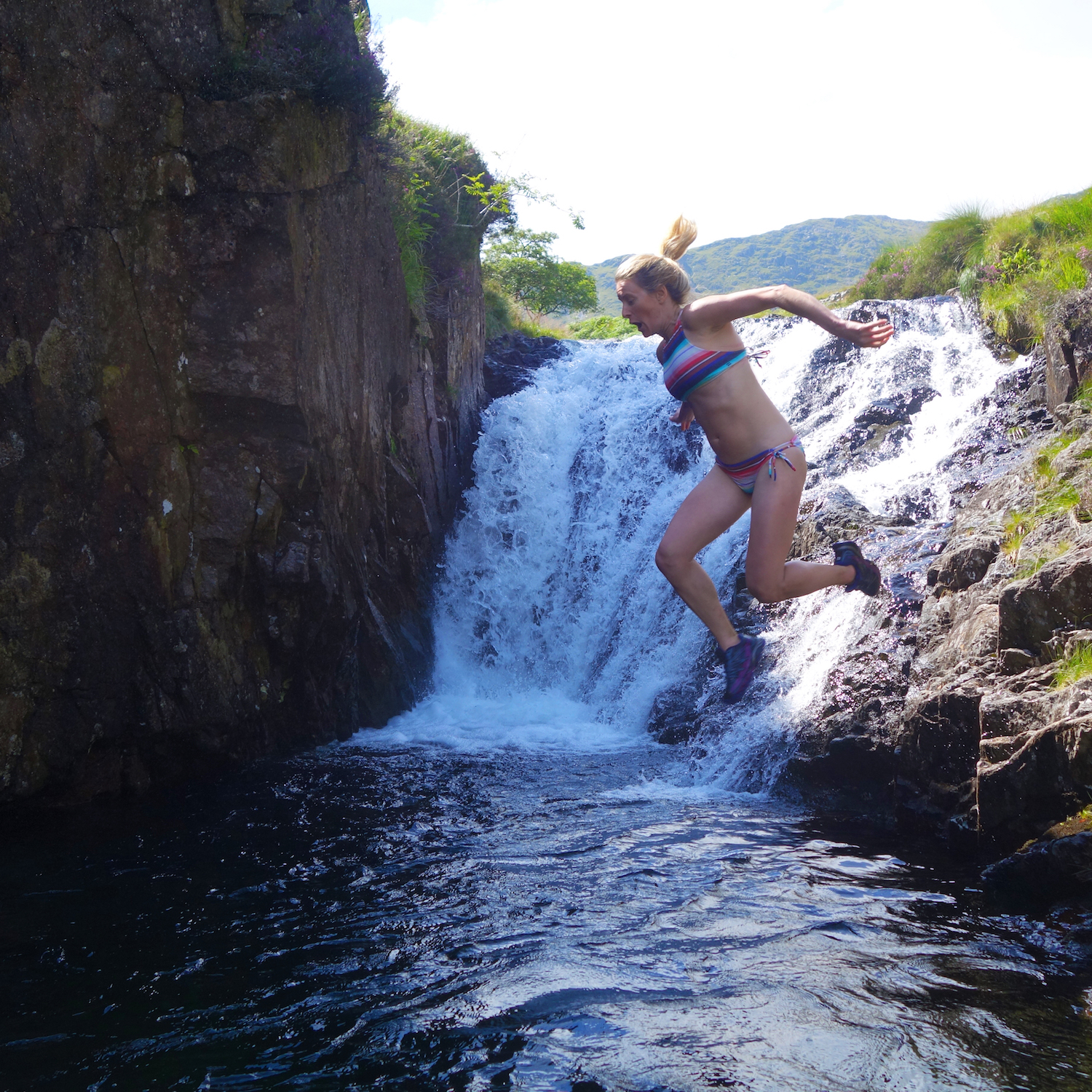
30 Nov Five tips for wild swimming
Hooray it’s done! Setting a challenge to swim in 50 Snowdonian lakes and rivers by December 1st definitely helped to keep me motivated through the bleaker months of the British calendar. We swap hemispheres for a different challenge tomorrow so I thought I’d quickly share what I’ve learnt in case it’s useful.
#1 afterglow
Why did I decide to swim in 50 of Snowdonia’s lakes and rivers? The simple answer is that people are motivated to exercise by different things, and my personal motivation has always been exploring. A trail runner at heart, I’ve spent most of my life running around in the wilds for hours most days. Living in Pembrokeshire, I ticked off the coast path in sections. When I moved to Chamonix I collected runnable ridges and summits. Then, when I moved to Snowdonia, I strained my Achilles. The injury came back every time I tried to run hard or far, which dramatically affected my mood at first. Being a nosey journalist, I decided to research natural highs. I discovered that freshwater swimming offers a short cut to a high dose of feel-good rewards, such as endorphins and serotonin, due to the extra intensity added by the temperature drop. So now that I can’t run as hard or as far I used to, I often run to a swim. Getting off the beaten track to hunt valleys for their mirrors has provided a wonderful new dimension to explore and you feel pure and full-body awake afterwards. It combines perfectly with easier trail runs for a blast of both worlds!
#2 accept
I used to be a real flapper when I got into cold water. I’d jump around and ‘ooh’. Meanwhile my good friend Sarah would be all zen. She’d breathe, and calmly slip in. Then Sarah taught me her ways. She banned the c%$& word; we were allowed to say things like ‘refreshing’ or ‘elemental’ but not that. Once I learnt to accept the temperature, I found I could just get in. Everything became easier after that. And as I acclimatised more (see below), it became easier and easier to accept the conditions. Now the sight of freshwater makes me thirsty to just get in, whatever the temperature. Acceptance is generally key with these things though isn’t it. You don’t really start to enjoy trail running till you reach the level where you’ve stopped thinking, “How much further?” and started thinking: “I just want to fly!”
#3 acclimatisation
Just as trail runners hear, “You’re so good doing all that running!” So wild swimmers hear, “Wow you’re brave!” Truth is we were just inspired to do it enough that we’ve become addicted. Perhaps it’s obvious, but I’ve learnt that you can acclimatise for cold water just as you can acclimatise for altitude or get fit for distance. I don’t feel the cold anywhere near as much if I swim regularly. However, as you get used to it, your body works less hard and you have to stay in longer to feel as good afterwards. Winter is coming, though. Added to the fact that the temperature drops further, making your body work harder, it’s also less easy to warm up when you get out, so I’ve been cautiously getting in the water for less and less time. At the moment ten minutes is average. Essentially it’s a balancing act and I’m still learning. It’s always wise to tune into your body, the conditions and stay on the safe side…
#4 alone
There are dangers to consider, of course – especially if you’re going to swim alone. The enemies of the British freshwater swimmer are cramp, cold water shock response and hypothermia. I would take a float if I was planning to swim far from shore on my own. You can buy inflatable ones that double as drybags for your stuff. In winter, I’d seriously consider wearing a wetsuit before swimming any kind of distance from shore. If you’re not acclimatised and it’s particularly cold, it’s wise to wade rather than jump in – cold water shock response can have serious consequences like hyperventilating and drowning.
#5 and … naked?
If, after trail running to a remote lake, you were unlikely to accidentally present anyone with a full-frontal, why would you carry swimmers, faff into them, and then carry the soggy bundle home? It’s a stereotype but I think true that Brits can be particularly uptight about nudity. Is there such a thing as non-sexual nudity in our culture? I think the general European attitude to normalised nakedness where it makes sense – getting changed without towel-wrestling, showering naked at the pool or gym, sauna naked etc – is much more healthy as you see how many different shapes people come in and don’t end up body-conscious having only ever seen perfect bodies in the media. Anyway my general rule of thumb is – if people are likely to show up close by, I take a cozzy; otherwise I don’t bother. There will be occasional bottoms and side boobs in my photos. I’m not trying to be scandalous – just representing the joys of wild swimming authentically!


No Comments